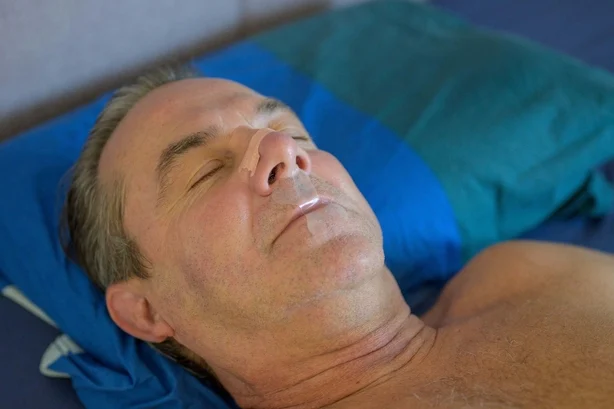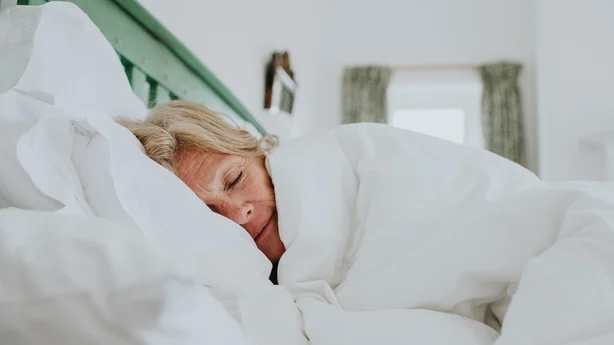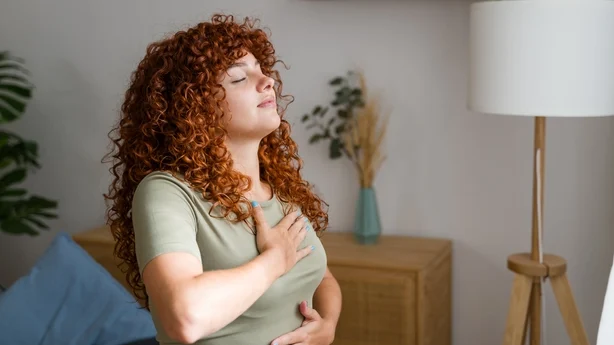Stay updated with the latest beauty tips, trends, and news from our salon experts. Our blog is your go-to source for all things beauty.
Celebrities like Gwyneth Paltrow, Ashley Graham, and Erling Haaland are among those championing mouth taping as the latest miracle solution for snoring.
While this unconventional remedy may sound (and look) odd, mouth taping brands claim that it helps stop snoring by promoting nasal breathing during sleep.
Could this simple, non-invasive approach be the breakthrough that us snorers have been waiting for, or is it just another passing fad?
We reached out to experts to find out if it’s really worth all the buzz.
What is mouth taping and how does it work?

"Mouth taping is the act of putting medical or masking tape over the mouth while sleeping at night," says Dr Hana Patel, resident sleep expert at Time4Sleep. "TikTok influencers claim it quiets snoring and prevents morning dry mouth.
"The goal is to encourage breathing through the nose rather than the mouth at night."
Breathing out of your mouth during sleep can cause several issues.
"Breathing in and out of the mouth can cause your airways to become dry and irritated, leading to hypersensitive airways, a dry mouth, sore throat and irritating cough," explains Patel. "People who breathe through their mouth and not their nose are more likely to develop sleep disorders, including sleep apnoea."
Whereas, nasal breathing has a number of benefits, including air conditioning and filtration.
"Our noses filter the air that we breathe, taking away material such as dust, pollen, ash, bacterial and hazardous particles," says Patel. "Our noses are also able to help reduce irritation to our lungs by acclimatising the air we breathe before it reaches our chest."
Nasal breathing can also be linked to more restorative sleep.

"Nasal passages slow the airflow, which calms the breath and encourages deeper sleep, similar to the benefits of yoga and mindfulness practices," says Dr Rizwan Mahmood, dentist, doctor, and co-founder of luxury dental clinics, Ruh Dental.
"Mouth taping helps maintain this nasal breathing pattern, potentially leading to better energy levels and improved recovery upon waking."
Why has mouth taping increased in popularity?
"As people shift towards lifestyle changes that prioritise long-term health, mouth taping fits in with habits like intermittent fasting and cold plunges," says Mahmood.
And praise from high-profile names, from footballers to actors, has undoubtedly fuelled its popularity.
"Notably, footballer Erling Haaland has incorporated mouth taping into his nighttime routine to improve his athletic performance," notes Mahmood.
"Gwyneth Paltrow has also embraced mouth taping as part of her daily routine, stating that it’s the best wellness tool she has found."

Are there any risks of using mouth tape when you sleep?
"While intentional nose breathing during waking hours can help slow down breathing and ease anxiety, taping your mouth while sleeping can be dangerous," warns Dr Bhavini Shah from LloydsPharmacy Online Doctor. "It can lead to hampered breathing, disrupted sleep, and skin irritation."
In addition, it may also not be suitable for people with pre-existing conditions.
"Many of the benefits are anecdotal, and the technique may not be suitable for everyone, particularly individuals with pre-existing respiratory issues or sleep disorders such as obstructive sleep apnoea," says Mahmood. "Before trying mouth taping, it is crucial to consult your doctor or a sleep specialist.
"Nasal obstructions, undiagnosed sleep apnoea, or other respiratory conditions could make mouth taping unsafe."
What other treatments can help you stop snoring?
"There are multiple treatments which can help the symptoms associated with mouth breathing," says Patel. "A mandibular advancement device, vestibular shields (chin strap), nasal dilators or medicated sprays may be prescribed depending on your needs."
And you can always practice nasal breathing at home without mouth taping. Patel recommends the following exercise…

"Sit comfortably with a straight back, legs uncrossed and knees shoulder-width apart," instructs Patel. "Look straight ahead, slightly upwards or close your eyes.
"Place one hand on your upper chest and one on your lower chest and settle yourself by breathing smoothly and quietly through your nose.
"After a couple of minutes, move your hand from your upper chest to rest in your lap. Relax the rest of your muscles, for example in your face and jaw, neck and shoulders, lower abdomen, hips and legs."